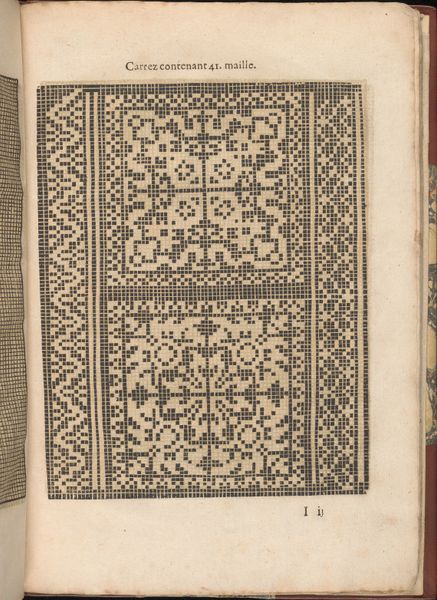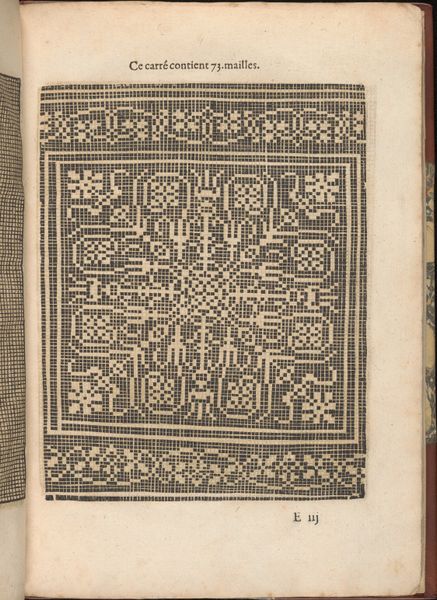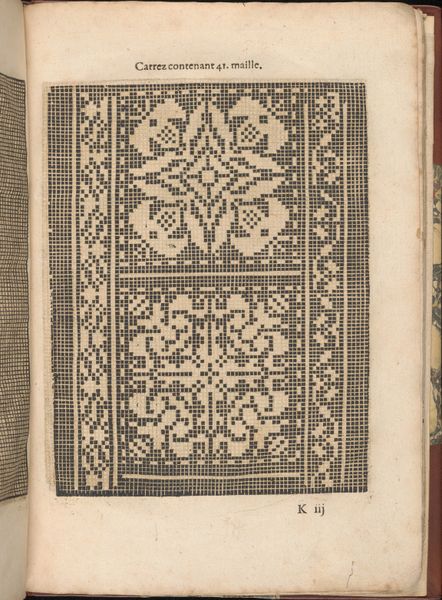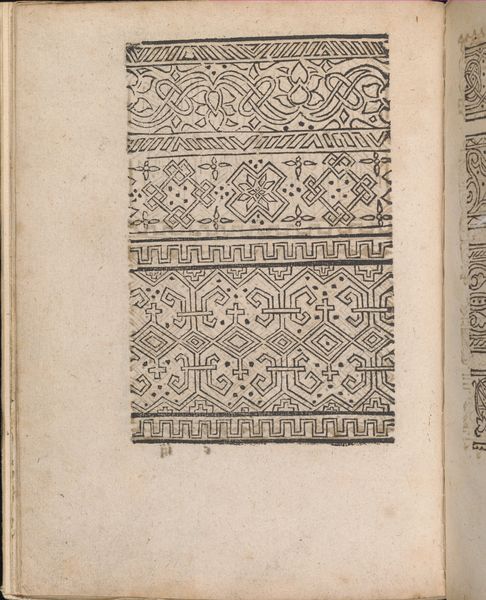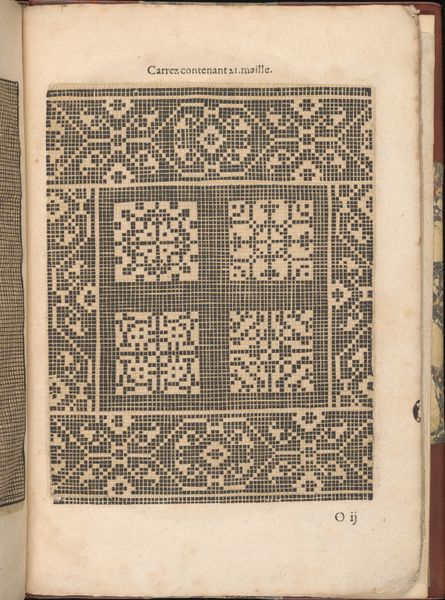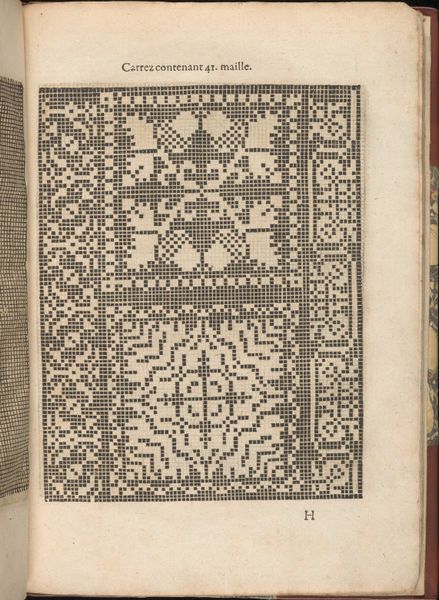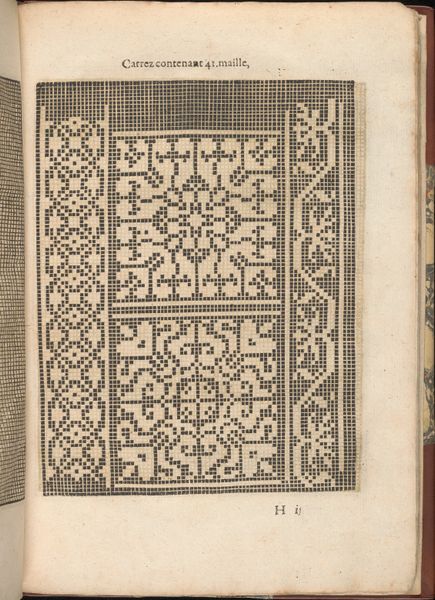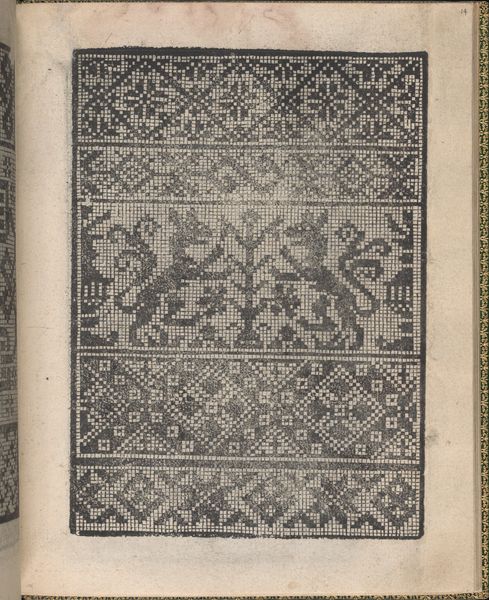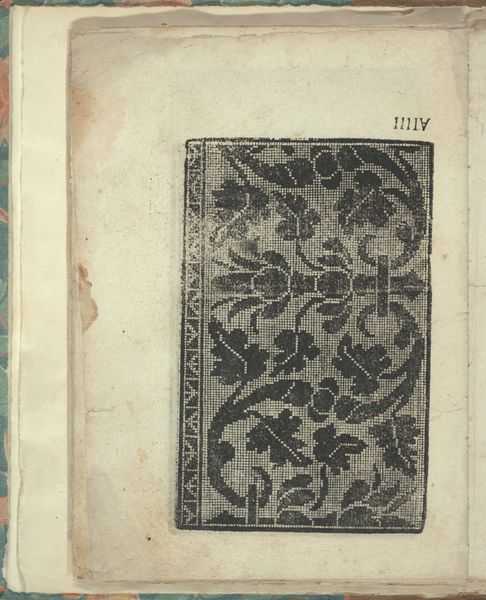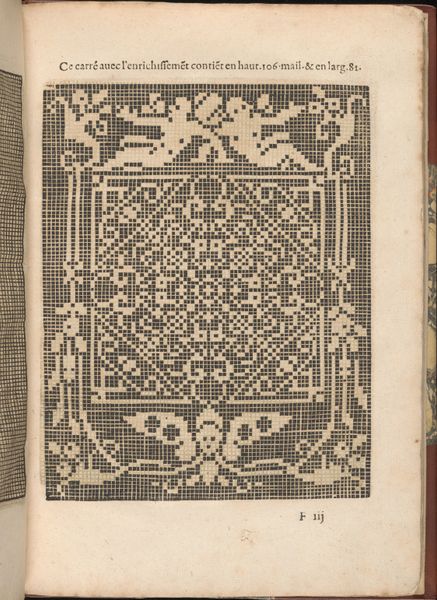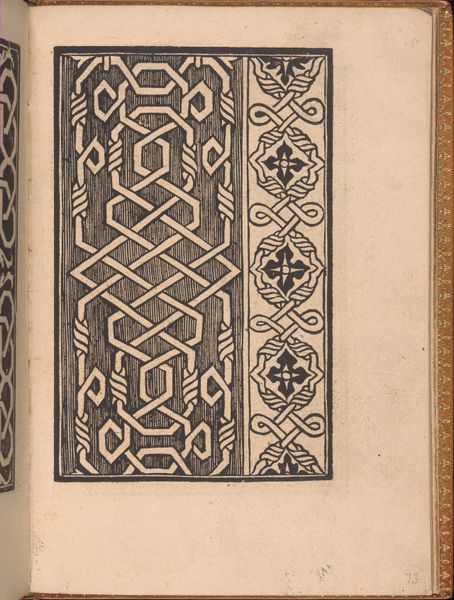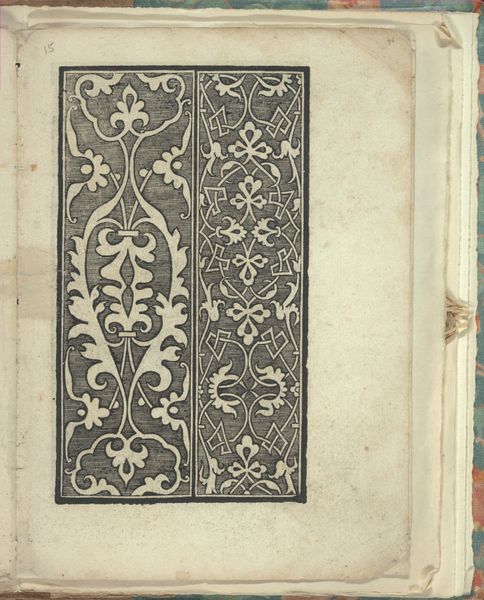
Les Secondes Oeuvres, et Subtiles Inventions De Lingerie du Seigneur Federic de Vinciolo Venitien, page 51 (recto) 1603
0:00
0:00
drawing, print, textile, paper, ink, woodcut, engraving
#
drawing
#
ink paper printed
# print
#
book
#
old engraving style
#
textile
#
paper
#
ink
#
geometric
#
woodcut
#
engraving
Dimensions: Overall: 9 7/16 x 6 1/2 in. (24 x 16.5 cm)
Copyright: Public Domain
Editor: Here we have a page from "Les Secondes Oeuvres, et Subtiles Inventions De Lingerie du Seigneur Federic de Vinciolo Venitien," created in 1603. It's a print, an engraving, on paper with ink, showcasing textile designs. What I immediately notice is the incredibly detailed, almost pixelated, quality of the patterns. It reminds me a bit of early computer graphics! What strikes you about this particular page? Curator: I see a document deeply embedded in the material culture of its time. The woodcut engraving, the paper, the ink – these were the technologies that enabled the mass dissemination of design. Vinciolo wasn’t just creating patterns; he was providing the means of production for an entire sector of domestic craft. Think about the labor involved! Editor: Right, someone had to carve those designs into the woodblocks. I guess it highlights how interconnected art, craft, and industry were, even back then. Curator: Exactly. And "lingerie," in the 17th century, encompassed all linen goods. This wasn’t just about pretty lace; it was about furnishing homes, creating wealth, and defining social status. The pattern itself reflects that; the geometric motifs aren't arbitrary - they speak to structure and utility, even within the realm of ornamentation. The grid format mimics and prefigures weaving itself. Where was the value located? In the "art" of design, or in its production? Editor: So, the beauty here isn't just aesthetic, but also rooted in the functionality and accessibility it provided? Did the act of disseminating these patterns democratize design in a way? Curator: I would argue it reshaped it. Vinciolo commodifies textile production. By printing designs, textile creation is transferred from the skilled artisan, at the loom or embroidering frame, to a domestic craft, accessible to any who can follow a pattern and apply its repetition, for themselves, or their business. It's less about high art, and more about enabling a broader culture of making, buying, and, I believe, thinking. It's interesting that printed form flattens and geometrizes what would exist, materially, in complex relief and structure! Editor: That's fascinating! I hadn’t considered the labor and distribution aspects so deeply before. Now, it makes me want to examine other printed materials of the era. Curator: Precisely! We’ve explored how materials and processes shape art.
Comments
No comments
Be the first to comment and join the conversation on the ultimate creative platform.
